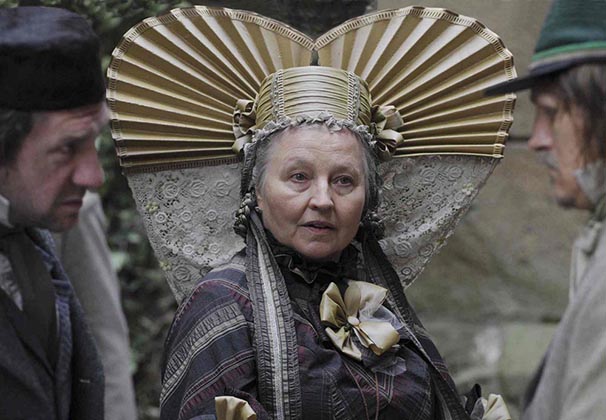
Russian filmmaker Aleksandr Sokurov’s phantasmagorical take on familiar legend “Faust” diverges from the traditional romantic ideals of German writer Johann Wolfgang von Goethe’s literary masterpiece.
Infused with strikingly beautiful scenes, “Faust” takes the viewer on a bizarre, stimulating journey culminating in hell. The film centers on Faust (Johannes Zeiler), a man in search of the ideals of the Enlightenment. He becomes obsessed with the beautiful Margarete (Isolda Dychauk) — so obsessed that he willingly sells his soul to the Devil (Anton Adasinsky) to make her fall in love with him.
“Faust’s” greatest strength is derived from its immense idiosyncratic world that stimulates visual euphoria. “Faust” also features a dramatic soundscape that broadens the world’s sensory effect. The lighting, palette of bleak colors, use of space, pauses and musical gravity all create a truly peculiar vision evident from the first scene.
Sokurov is known for his intense visual creations stemming from culturally rich locations, and “Faust” drives its visible emphasis through cinematographer Bruno Delbonnel’s work. Delbonnel, who previously shot “Amélie” and “Harry Potter and the Half-Blood Prince,” uses visuals to completely enrapture the viewer. Producer and composer Andrei Sigle helps expand the cinematic experience with his successful integration of music from medieval Germany, Richard Wagner, Pyotr Ilyich Tchaikovsky and Gustav Mahler.
Sokurov’s “Faust” is the final installment of his cinematic tetralogy on the nature of power — previous installments include “Moloch,” “Taurus” and “The Sun.” “Faust” is a depiction of the darkness of man, and explores the illogical unhappiness inherent in everyday life. Sokurov’s installments are all linked by the extent to which which people can cause unhappiness in the world around them. Contrary to other installments, Faust strays from his mortality, is granted another opportunity toward his pact and is given power.
Zeiler’s Faust is a truly innocent man, who slowly falls into an unsettling hunger for power. To complement Zeiler, Adasinsky’s eccentric personality adds a comedic twist to the Devil, and his ability to paint seemingly innocent disillusionment and shift to pure evil is truly amazing.
Although Sokurov maintains Faust’s desire for knowledge and satisfaction as originally depicted by Goethe, the protagonist is stripped of his romanticism. He is, instead, a pessimist who would abandon his morality for the pure sake of achieving a goal through sheer negative conviction. Nonetheless, Sokurov still portrays Faust as a struggling scientist in the drab world that the Enlightenment sought to radically influence.
Despite his inability to completely understand all of Goethe’s ideas in “Faust,” Sokurov maintains an upper hand in his ability to plunge the viewer into a middle-European environment. “Faust” successfully brings disillusioned wonderment supported by breathtaking visuals and theatrical musical composition.
A version of this article appeared in the Wednesday, Nov. 13 edition. Mohamed Hassan is a staff writer. Email him at [email protected].






















































































































































